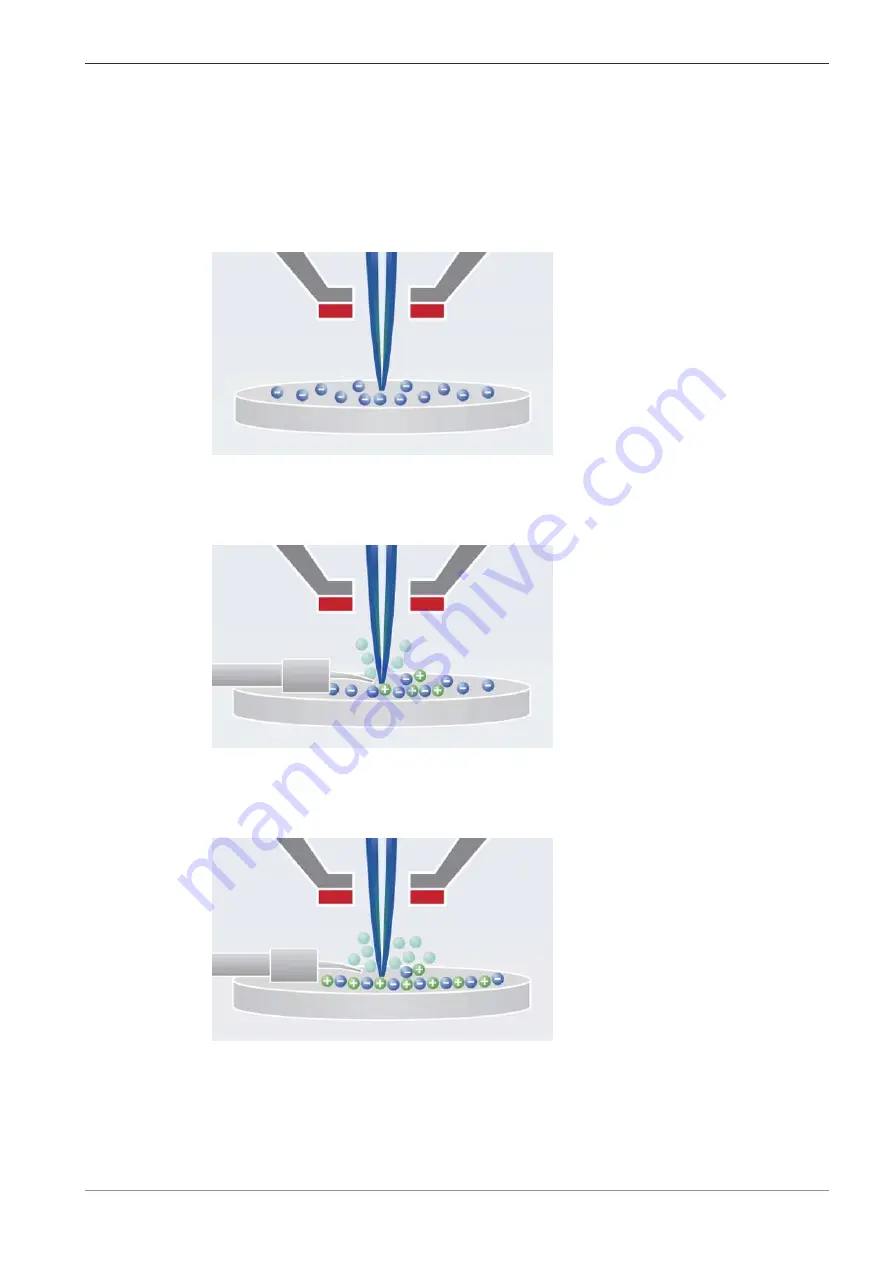
ZEISS
3 Product and Functional Description of Focal CC | 3.4 Principle of Operation
3.4 Principle of Operation
Charging
When a non-conducting specimen is exposed to the primary electron beam, charging effects on
the specimen surface inhibit clear and stable imaging.
The charging effect is caused by an imbalance of incoming primary electrons and emitted elec-
trons, consisting of secondary electrons (SE) and backscattered electrons (BSE). In most cases the
net charge is negative, i.e. the number of incoming electrons is higher than the number of emit-
ted electrons.
Charge
Compensation
The Focal CC operates to avoid the charging effect. This is achieved by injecting a local flow of
gaseous nitrogen onto the area of interest.
A small gas nozzle is positioned next to the specimen surface. Through this gas nozzle a flow of
nitrogen is applied to the specimen surface in the e-beam irradiated area.
Primary electrons and backscattered electrons from the specimen surface ionize the gas mole-
cules.
The electrons released during ionization move away from the specimen surface, while the positive
charge of the ions neutralizes the specimen surface. Thus, charging effects are minimized.
The serial block-face imaging technique requires less charge compensation compared to repeated
scans of the same area. If experimental parameters are adjusted appropriately, then a consider-
able fraction of the injected charge is cut away from the specimen prior to each image acquisi-
tion. This is beneficial for the serial block-face imaging technique since it reduces the gas flow re-
quired to the region of interest. However, it means the setup process is more challenging. During
setup (e.g. focusing), it is common practice to repeatedly scan the same area. The charge com-
pensation appropriate for a cutting experiment is too low for repeated scans of the same area.
Instruction Manual ZEISS Focal CC | en-US | Rev. 2 | 349561-8021-000
15
















































